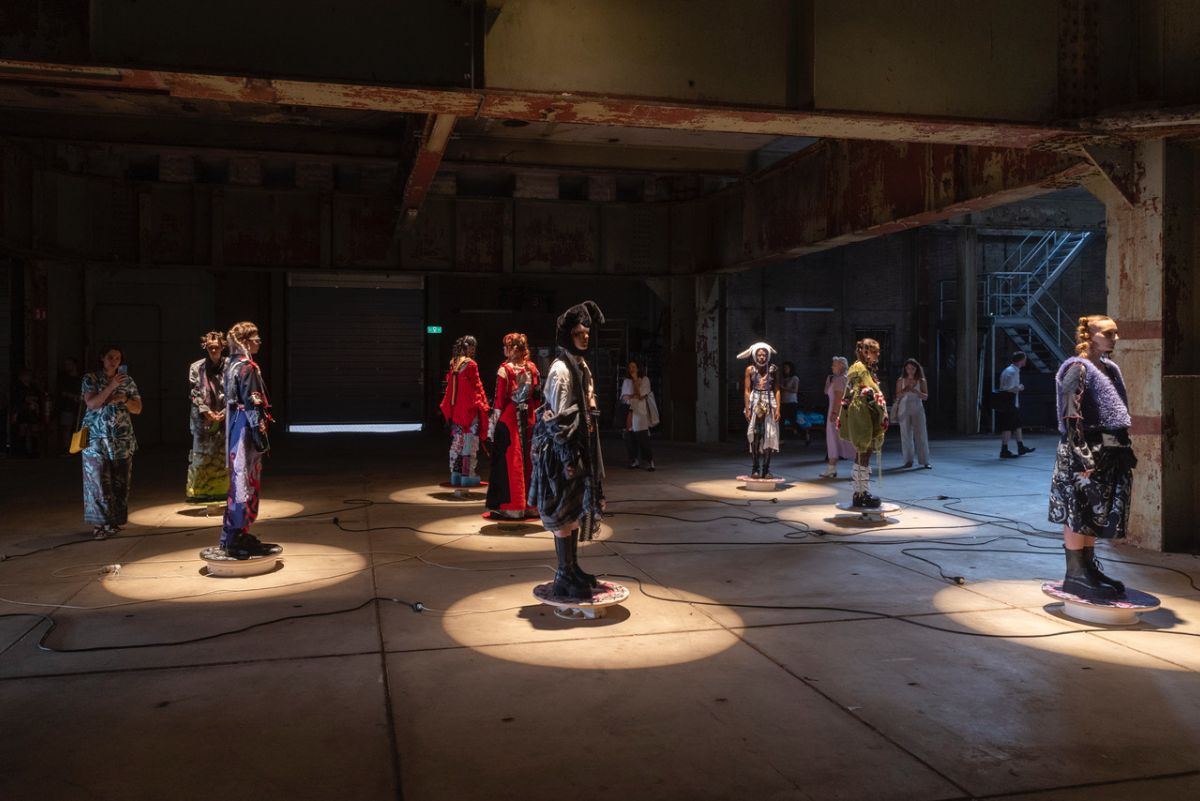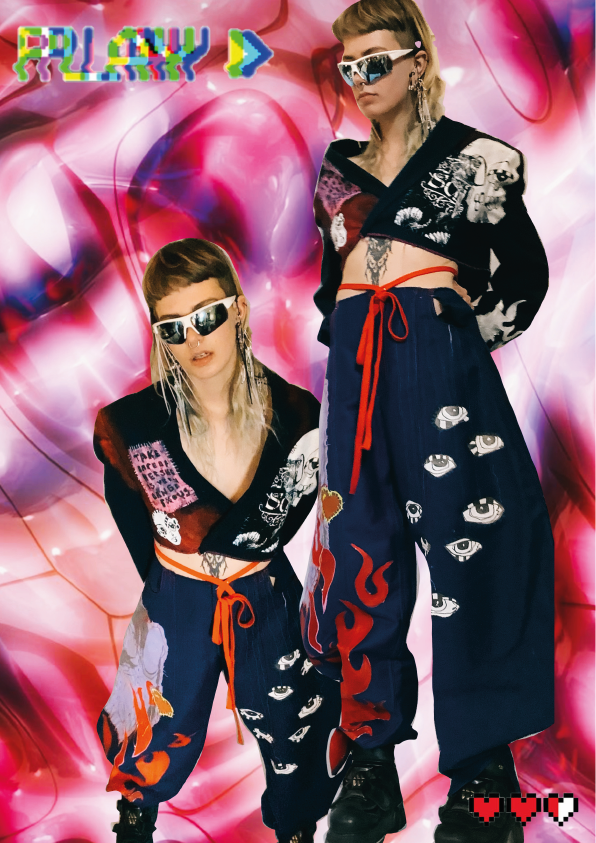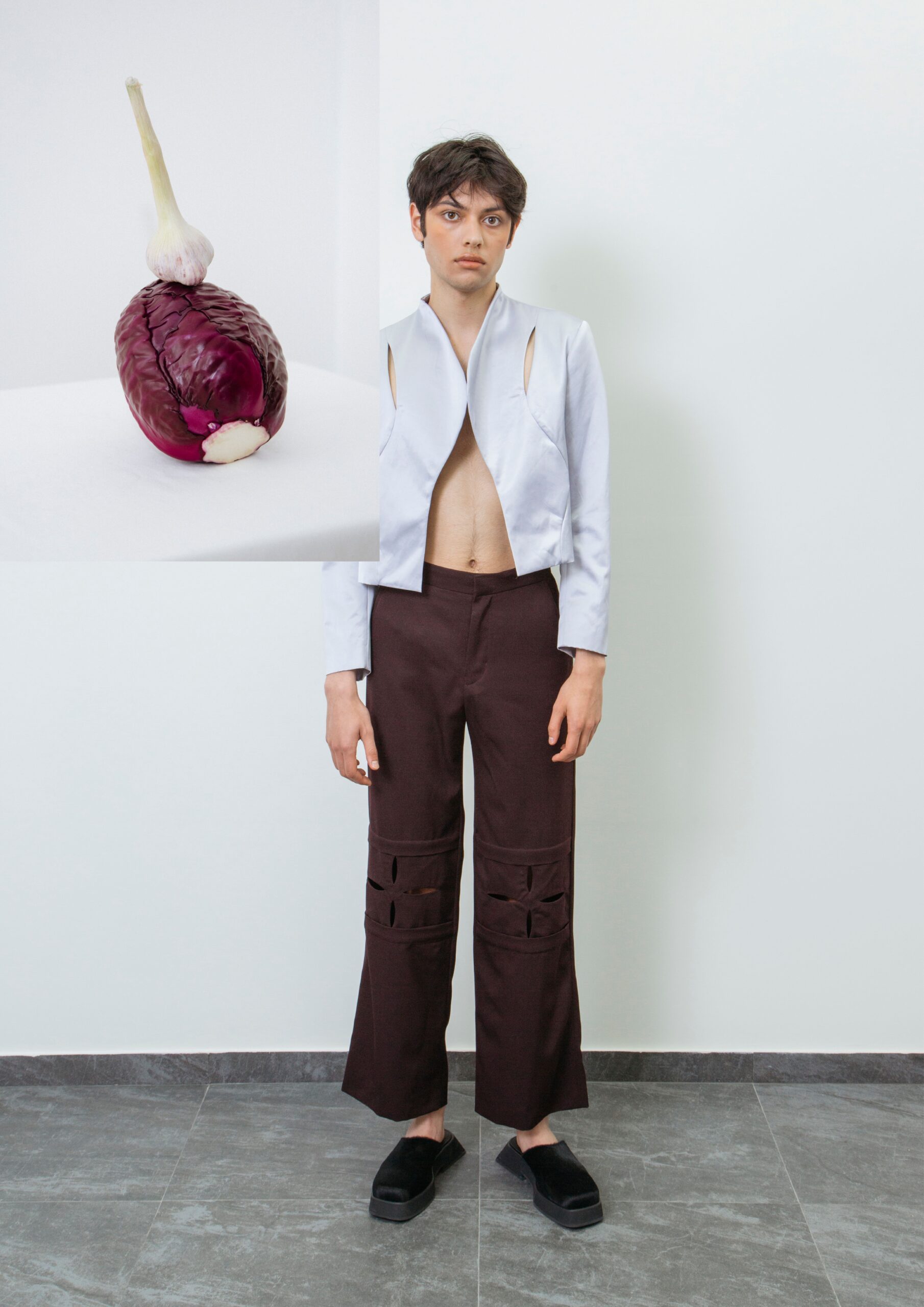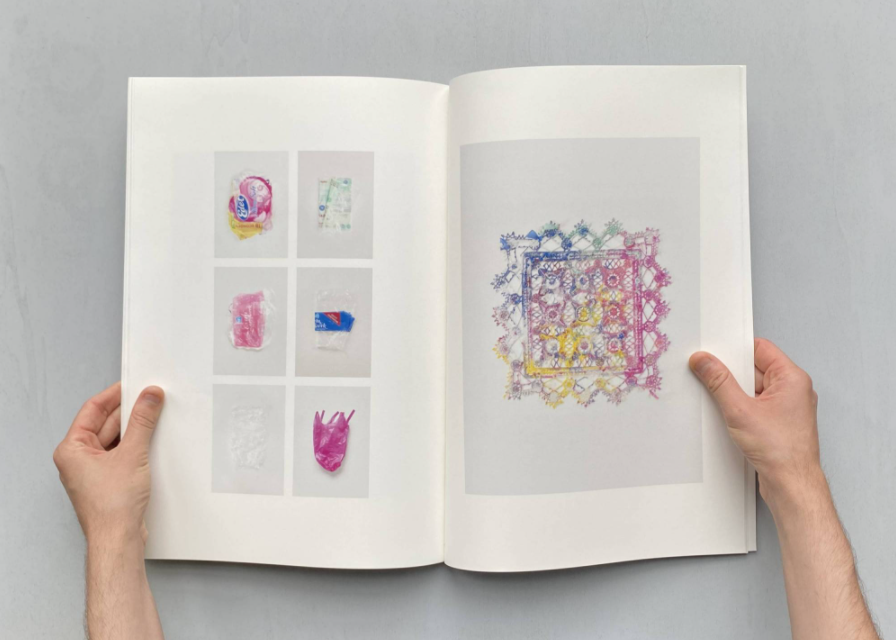In conversation with Glamcult’s KABK selects of 2021

The fashion industry is a forever turning universe in which new ideas evoke transformative changes within this irrevocably dystopian world. This year’s KABK end-of-year presentation exemplified nothing less. In awe of the graduate’s presentations, we reached out to three creatives we felt particularly inspired by, who each individually had a differently fascinating take on this season’s theme: Transform. It is therefore our honour to introduce to you Luka Dortmans, Anwen Xu & Jiahao Li (aka Studio Dijk) alongside Keep an Eye Textile & Fashion Scholarship winner Max Willebrand Westin.

How did you first come to your craft and what has this journey looked like for you?
I grew up in a creative family; both my parents graduated from AKI Arnhem. Because of this, I was exposed to several different forms of art from a very young age. I was always creating something, whether it be drawing, making clothes or building furniture for my Bratz dolls. It was always clear to me that I would study art. I choose fashion because I wanted to know how to make clothes. I was always altering clothes…but back then I wanted to know how to make a full piece by myself. It’s funny that now I came back to altering/recycling clothes in my graduation collection.
From this beginning to the world we are in today – how does your work reflect cultural/ environmental changes?
By recycling OLD garments and making them into something new. In my collection, I created my own girl gang with each girl having her own personality and looks, but still showing togetherness as a whole. It is based on the girls who I have experienced in my life, and on how I felt when I was left out by the ‘’norm’ or at least what was seen as normal in society. Also, I took inspiration from the anime ‘dere’ character traits and emotions. The Sukeban girl can be seen as a reaction against the sexual revolution of the 60s, a means of protection by which girls could show that their existence wasn’t defined by the desires of male onlookers. In the 21st-century all-girl motorcycle gangs, best referred to in English as “speed tribes” emerged when the girlfriends of male biker gang members became fed up with being stuck on the back of the bike. This too has this all-girl outlaw subculture which prevailed as an alternative narrative and alternative way of living for young women. *plays rebel girl by bikini kill*
Could you describe the intention behind your work/ collection for the KABK show?
For my graduation collection, I focussed on the world of the Bosozoku, Sukeban and Yankii. What intrigues me the most about Sukeban and Bosozoku girls is that they create their own atmosphere. Breaking the rules and breaking Japanese standards. Finding their own fascinations for fashion and motorcycles. Belonging to a group that respects your life choices.
… And how did this intention come to fruition?
I’ve always had a fascination for Japan, Japanese subcultures and Japanese pop culture. Over the past years, I have researched different aspects of Japanese youth, mainly those cultural groups that are considered as ‘outsiders’. Elements that don’t fit in, play quite a big role in my work. I’m fascinated by creating your own unique version of yourself, escaping the standards and the strict rules.
What can we expect to see in your future? And what do you envision for the future of your artistry?
For now, I’m saving and working towards my big trip to Japan, with the possibility of staying there. I will take all the challenges that come along the way. I also want to begin working together with different artists, as well as a small exhibition with my mom. As this is something we always wanted to do.
My dream is to one day have my own store in a city that fits the punky vibes. Where I will continue the same way of working as my graduation collection presents; recycling\upcycling, illustrating and collaborating.

How did you first come to your craft? What has this journey looked like for you?
A&J: Study fashion in art school was contemplative, we both come from a background with a passion for garments, and appreciated the tactility and materiality of fashion. We eventually came to the realization that fashion should also be funny.
From this beginning to the world we are in today – how does your work reflect cultural/environmental changes?
A&J: We both think the skill in textiles needs to come back in fashion, we spend a lot of time developing our own fabric with crochet, knitting, and beading, we value small details, even making our closures and buttons, things people probably won’t even notice! It is very hard nowadays for a fashion student to still have a belief in crafts with the boom of Instagram – because all the ads out there are for a product that has existed for decades, changed to a package and then draw with a concept of organic, vegan, eco-friendly by young girls who have many followers sell for 10 times the price. There is no fantasy about fashion anymore, most people don’t care about the making of clothes.
Could you describe the intention behind your work/ collection for the KABK show?
Our presentation at the show is about creating a little room with a view, you have a little sky and grass in there but it’s all FAKE! Same for the garments, don’t take it too seriously!
… And how did this intention come to fruition?
A&J: We even create stupid names for each garment by reflecting the whole process in anticipating functions and things you can find in ordinary life (like going to the supermarket). For example, we had a very basic menswear jacket, which has a high collar and strange cuts in the front and back, we deliberately sized down the armhole so you can barely stretch your arm (definitely not for taking the metro) so, we named it the Uber jacket. We also had obsessions about various vegetables, so we decided to do a veggies porn at the end…it turned out to work well with our garments, so if you go do your groceries, pay a little more attention, our whole collection is in there! You could find a spinach jacket there as well!
What can we expect to see in your future? And what do you envision for the future of your artistry?
A&J: We are excited to start something under Dijk studio, maybe continue the mess that we are doing, or something completely different.

How did you first come to your craft? What has this journey looked like for you?
Prior to my bachelor study in KABK, I did a two-year preparatory study in leathercraft in Stenebyskolan, an amazing school in the Swedish countryside two hours north of where I come from. I spent most of my stay there stitching things by hand, which is very time-consuming and demands a lot of patience and precision. I don’t exactly remember why, but I started becoming more and more drawn to textiles, especially embroidery and beadwork and spent a lot of my free time trying out different stitches. Imagine living 5 minutes away from school in a village with no more than around a thousand people, hours away from the closest city. In that place, there was just not much else to do but to be in school trying to perfect your craft. If I can, I would highly recommend it to everyone 😉
From this beginning to the world we are in today – how does your work reflect cultural/ environmental changes?
I think the title of my graduation project, “Longing for Now” says it all. These days, I believe that many people feel an urge to escape the day-to-day life and the social pressures of social media – to be present and to really look introspectively rather than mirror oneself in others to find answers. For me, making with my hands is the number one tool to centre my energy in the right places, to transform negative into positive. I’ve heard that all types of crafts have become increasingly popular now that we spent much more time at home during the pandemic, so I’m not the only one!
Could you describe the intention behind your work/ collection for the KABK show?
The research for my work started last year, a time in which I was dealing with a lot of emotional stress and the passing of a beloved friend. I can see now, that during quite an extensive period, I isolated myself from others and spent most of the time in my room making textiles, as a way of coping. Consequently, I started reading about the relationship between textile crafts activities and human well-being, and the positive impact that crafting has as a means for introspection, healing and as a way of coping. What I learnt, is how many crafters describe, in similarly explicit ways, how the act of making has helped them deal with restlessness, balance out stress, go through personal transformation, grief and loss.
The state of my being really called for me to be compassionate and gentle towards my own situation at the time, and therefore, to give myself less pressure in the design process, I decided to focus on more simplistic and repetitive working methods. The transformational aspects of healing, perseverance and resilience is what I wanted to bring into the work. Visually, I’m drawing a parallel to alchemy – a seemingly magical process, a transformation of matter in which base metals are converted into gold.
… And how did this intention come to fruition?
I started going on long walks to collect discarded objects from the streets, as well as plastic bags from my surroundings. This big collection of objects and bags served as my raw materials, that with the help of the textile medium I intended to “turn into gold”. My idea was really to transform (or heal if you will) the value of these seemingly worthless materials by changing their physical form or highlighting them in a different way. From the bags, I spin yarns, and from the yarns I make textiles. Some of the found objects from my archive I have mended, also with these yarns.
What can we expect to see in your future? And what do you envision for the future of your artistry?
More small-scale and handmade textile works, hopefully in collaboration with other arts and craftspeople! I’m very eager to start working more independently, to structure my projects more freely, but also to do some courses specialised in more particular textile techniques. At some point in the future, I would also like to do teaching!
Go check out the KABK graduate show, TRANSFORM here!
Words by Grace Powell